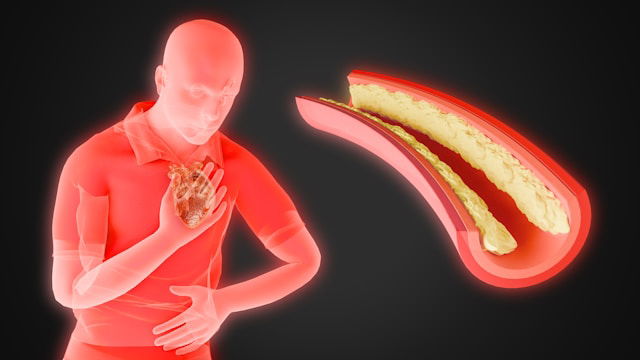
When arteries in the heart become blocked, it’s known as coronary artery disease (CAD).
This happens when the major blood vessels that supply the heart with oxygen and nutrients get damaged or filled with plaque—a mix of fat, cholesterol, and other substances.
These blockages can grow slowly over time and eventually lead to heart attacks. Recognizing early signs is very important and could save your life.
Coronary artery disease often develops quietly over many years. In the early stages, you might not notice anything wrong. But as the plaque builds up and narrows the arteries, blood has a harder time reaching the heart. This lack of blood flow can cause several symptoms, especially when the heart is working harder during stress or physical activity.
One of the most common signs of a blocked artery is chest pain, also called angina. People often describe this as pressure, squeezing, or pain in the center of the chest. The pain may also spread to the shoulders, arms, neck, jaw, or back.
Angina usually starts during exercise or emotional stress and goes away after a few minutes of rest. Doctors stress that any new or unusual chest pain should be checked right away.
Shortness of breath is another warning sign. If the heart isn’t pumping enough blood, you may feel breathless during activity or even while lying down. Fatigue may come with this symptom, making even simple tasks feel exhausting.
Heart palpitations—feeling like your heart is fluttering or beating fast—can also signal a problem. When arteries are blocked, the heart may beat irregularly as it struggles to pump blood.
Sometimes, heart attack symptoms don’t look like what you see in movies. Some people, especially women, may feel nauseous, have indigestion, heartburn, or stomach pain. These symptoms can be mistaken for other problems like the flu or acid reflux.
Unusual tiredness is another important sign, especially in women. This kind of fatigue often appears without warning and can last for several days. It might also happen when doing activities that never made you tired before.
Breaking out in a cold sweat for no clear reason may also be a sign of a heart attack. This can happen along with chest pain, shortness of breath, or extreme fatigue.
If you or someone you know shows these symptoms, it’s crucial to seek medical help quickly. Doctors can use tests like stress tests, heart ultrasounds (echocardiograms), or special imaging of the arteries (angiography) to see how blocked the arteries are and decide on the best treatment.
Treatments may include changes to your diet and lifestyle, medicines, or procedures like angioplasty (to open the blocked artery) or bypass surgery.
In short, knowing the warning signs of heart artery blockages can help you act quickly and potentially save a life. Eating healthy, staying active, and avoiding smoking are powerful ways to lower your risk. And don’t forget regular checkups with your doctor—especially if heart disease runs in your family or you have other risk factors.
If you care about heart health, please read studies about top foods to love for a stronger heart, and why oranges may help fight obesity, diabetes, and heart disease.
For more health information, please see recent studies about simple guide to a 7-day diabetes meal plan, and why you should add black beans to your plate.
Copyright © 2025 Knowridge Science Report. All rights reserved.



